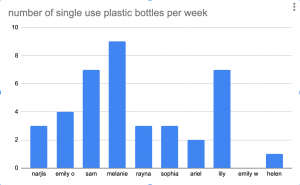One aspect of global learning that I think is important to focus on is global awareness. Global awareness is important because it is the human understanding of the natural systems of the earth and human societies and how they impact each other. If we can make more people aware of their global impact, then they might take more action to make a sustainable world. For example, the Earth can only produce so many natural resources that are renewable and I feel like everyone does not know that. If humans are using too much of these non-renewable resources then the planet will run out these resources much more quickly. An example of a nonrenewable energy source is oil or petroleum. This is a resource that countries produce and constantly use (i.e. at the gas station) and we are using more than what the earth can continuously supply. In 2020 we were averaging oil production of 88.4 million barrels of oil per day. At this extremely high consumption rate, the earth will run out of oil in about 47 years. This is concerning because we use oil as a nonrenewable energy source for just about everything. Hopefully technology can advance to the point where renewable energy is much more commonly used. I feel like this could be possible with the increase of electric cars instead of ones powered by petroleum. If more people knew about their impact then they may increase their level of global awareness and want to change their daily actions. Every little bit of change can help try to decrease the negative impact that non sustainable actions have on the health and future of the planet.
source : https://www.statista.com/statistics/265203/global-oil-production-since-in-barrels-per-day/#:~:text=Global%20oil%20production%20amounted%20to,at%20around%2095%20million%20barrels





